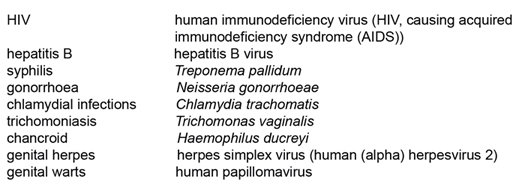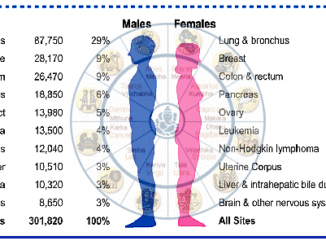
WHAT IS VIRAL HEPATITIS?
Viral Hepatitis: This is the inflammation and necrosis of the liver caused by a virus or group of viruses.
There are other types of hepatitis including hepatotoxic and drugs related hepatitis and alcoholic hepatitis.
Types of Viral Hepatitis
There are many types of viral hepatitis
Hepatitis A, B, C, D, E and G e.t.c
HEPATITIS B: It is caused by the Hepatitis B virus. A DNA hepadna virus with a partially double-stranded DNA genome.
HEPATITIS C: This is a serious and often-silent liver infection caused by the Hepatitis C virus – a single stranded RNA virus.At least six major genotypes have been identified.
MODE OF TRANSMISSION
Hepatitis B and C viruses are transmitted by contacts with infected blood or blood products
For example, via contaminated needles (including unsterilized tattoo needles), accidental needle-sticks in healthcare workers, and unprotected sex, sharing nailclippers, razors, or toothbrushes
-Unscreened Blood Transfusions.
OTHER MODES OF TRANSMISSION
It can also be present in saliva, semen and vaginal secretions and through HbsAg positive mothers to child (maternal-neonatal transmission). Hepatitis B is prevalent in homosexuals and intravenous drug users but most cases result from heterosexual transmission. The incubation period of hepatitis B is 6 weeks to 6 months (average of 12 – 14 weeks). That of Hepatitis C is between 6-7 weeks and clinical illness is often mild, usually asymptomatic.
Signs and Symptoms
Hepatitis C has been called “the silent killer” because the virus often hides in the body for years, escaping detection as it attacks the liver. Since most people don’t have warning signs of hepatitis C (or don’t know how or when they were infected).
They don’t seek treatment until many years later. By the time hepatitis C symptoms appear or a diagnosis is made, the damage often is well underway.
If symptoms do appear, they may be mild or severe. Among the most common complaints are:
Fatigue
Fever
Muscle or joint pain
Poor appetite
Nausea
Pain in the upper right part of the abdomen
Dark yellow urine
Vomiting
Yellowish skin or eyes (jaundice)
Itchy skin
Pale stools, easy bleeding, easy bruising.
Yellow Eyes: A Symptom
Acute and Chronic Hepatitis
ACUTE HEPATITIS as the name implies means the illness is sudden and short-lived, occurring within the first two weeks to six months of infection.
In up to 25% of cases, the virus clears from the body on its own without treatment.
CHRONIC HEPATITIS:
For hepatitis to change from an Acute state to Chronic, there should be persistent infection after six months and often much longer.
An estimated 75% to 85% of people with acute hepatitis go on to develop chronic infection.
Diagnosis of Hepatitis
Unless symptoms arise, people with hepatitis C usually don’t know they have the infection until it’s discovered during routine blood testing.
Simple blood test can tell if one is infected or not.
The routine tests include:
Tests for HbsAg
Tests for Anti-HCV.
Further tests and assays are proceeded for individuals who test positive to the above tests.
THE COMPLICATIONS OF CHRONIC HEPATITIS
As many as one in four people with chronic hepatitis C go on to develop cirrhosis, or severe scarring of the liver.
These people may have additional symptoms, including swelling of the legs and abdomen, spider-like blood vessels, and a buildup of toxins in the bloodstream that can lead to brain damage.
Persons with chronic hepatitis B, particularly when HBV infection is acquired early in life and viral replication persists, are at substantial risk of having cirrhosis and hepatocellular carcinoma.
Chronic hepatitis C is also one of the leading causes of liver cancer.
TREATMENTS
Treatments have vastly improved over the years. Today’s medications are more effective at ridding the body of the virus, and they have fewer side effects.
The type of treatment you receive will depend on the genotype, or strain, of your hepatitis, as well as how much damage the liver has sustained.
TREATMENT OF HEPATITIS B
The goal of treating chronic hepatitis B is to control the virus and keep it from damaging the liver. This begins with regular monitoring for signs of liver disease.
Antiviral medications may help, but not everyone can take them.
TREATMENTS: CHRONIC HEPATITIS C
Medications
Some of the newest medicines for hepatitis C genotypes 1, 2, and 3 include: Daclatasvir (Daklinza); Elbasvir/grazoprevir (Zepatier); Ledipasvir (Harvoni); Ombitasvir, paritaprevir, and ritonavir with dasabuvir tablets (Viekira Pak); Sofosbuvir/velpatasvir (Epclusa); Sofosbuvir (Sovaldi); Daclatasvir (Daklinza) with sofosbuvir (Sovaldi); and Sofosbuvir/velpatasvir (Epclusa).
Injectibles
PREVENTION AND CONTROL OF HEPATITIS B
The hepatitis B vaccine is recommended for all infants at birth and for adults
PREVENTION AND CONTROL OF HEPATITIS C
Currently, there is no vaccine for Hepatitis C.
Avoid any contacts with body fluids by protecting yourself using protective measures.
FACTS ABOUT STDs
Chlamydia:This is a common STD that can lead to infertility if left untreated. It clears up quickly with antibiotics. But it often goes unnoticed because symptoms are vague or absent.
Women with symptoms may notice
– An abnormal vaginal discharge;
– A painful urinating.
Symptoms in men can include:
A discharge from their
penis;
A burning sensation when
urinating; (dysuria)
Pain and swelling in one
or both testicles
Can chlamydia be cured?
Yes, chlamydia can be cured with the right treatment. When taken properly it will stop the infection and could decrease your chances of having complications later on.
GONORRHEA
Gonorrhea spreads easily and can lead to infertility in both men and women.
Antibiotics can stop the infection.
– Burning during urination and discharge.
– Later, the infection may cause skin rashes or spread to the joints and blood.
In Men: Discharge from the penis, swollen testicles.
In Women: Vaginal discharge, pelvic pain, spotting. Symptoms may be mild and are easily confused with a urinary tract or vaginal infection.
SYPHILIS
Most people don’t notice the early symptoms of syphilis. Without treatment, it can lead to paralysis, blindness, and death.
Syphilis can be cured with antibiotics.
Signs and Symptoms: The first sign is usually a firm, round, painless sore on the genitals or anus. The disease spreads through direct contact with this sore.
Later, there may be a rash on the soles, palms, or other parts of the body, as well as swollen glands, fever, hair loss, or fatigue. In the late stage, damage to organs such as the heart, brain, liver, nerves, and eyes occurs.
Herpes Simplex Virus Type 2
Most cases of genital herpes are caused by a virus called HSV-2. It’s highly contagious and can spread through intercourse or direct contact with a herpes sore.
There is no cure. But antiviral drugs can make outbreaks less frequent and help clear up symptoms more quickly.
Symptoms: Fluid-filled blisters that form painful, crusted sores on the genitals, anus, thighs, or buttocks. Can spread to the lips through oral contact.
HIV/AIDS
The HIV virus weakens the body’s defense against infections. HIV spreads through unprotected sex, needle sharing, or being born to an infected mother. It may cause no symptoms for years, so a blood test is the best way to learn your status.
Timely treatment is important to help prevent serious illnesses. Many have no symptoms, but some people get temporary flu-like symptoms one to two months after infection: swollen glands (seen here), a fever, headaches, and fatigue. Canker sores in the mouth can occur, too.
TREATMENT OPTIONS FOR HIV
While there is no cure for HIV, there are medications that can suppress the amount of virus multiplying inside the body. People take a combination of antiviral drugs in hopes of preventing the infection from advancing to AIDS.
Trichomoniasis
Trichomoniasis is caused by a parasite that spreads during sexual contact. It can be cured with prescription drugs.
Signs and Symptoms in Men: Most men have no obvious symptoms. Some develop a mild discharge or slight burning during urination.
Signs and Symptoms in Women: Women may develop a yellow-green discharge with a strong odor, vaginal itching, or pain during sex or urination. Symptoms usually begin five to 28 days after acquiring the parasite.
COMPLICATIONS OF STDs
Pelvic inflammatory disease (PID) is a serious complication of untreated STDs, especially chlamydia and gonorrhea.
It happens when bacteria spread to infect the uterus and other female reproductive organs. Prompt treatment is essential to prevent damage to a woman’s fertility.
Signs and Symptoms: Lower abdominal pain, fever, unusual discharge, painful intercourse, painful urination, and spotting. However, there are often no warning signs.
Who’s at Risk for STDs?
Anyone who is sexually active is at risk for an STD, regardless of gender, race, social class, or sexual orientation.
That said, teenagers and young adults acquire STDs more easily than older people.
Can Virgins Get STDs?
Yes, they can. Many STDs spread through any type of sexual activity, including skin-to-skin contact and oral sex. This is especially true of STDs that produce genital lesions or sores.
Preventing STDs
The best ways to avoid getting an STD are to abstain from any sexual contact.
Do not share sharps and needles.
Avoid the use of unsterilised objects.
Make hyiene a priority.
Proudly WWW.PONIREVO.COM
Source by Eniola Adewale



